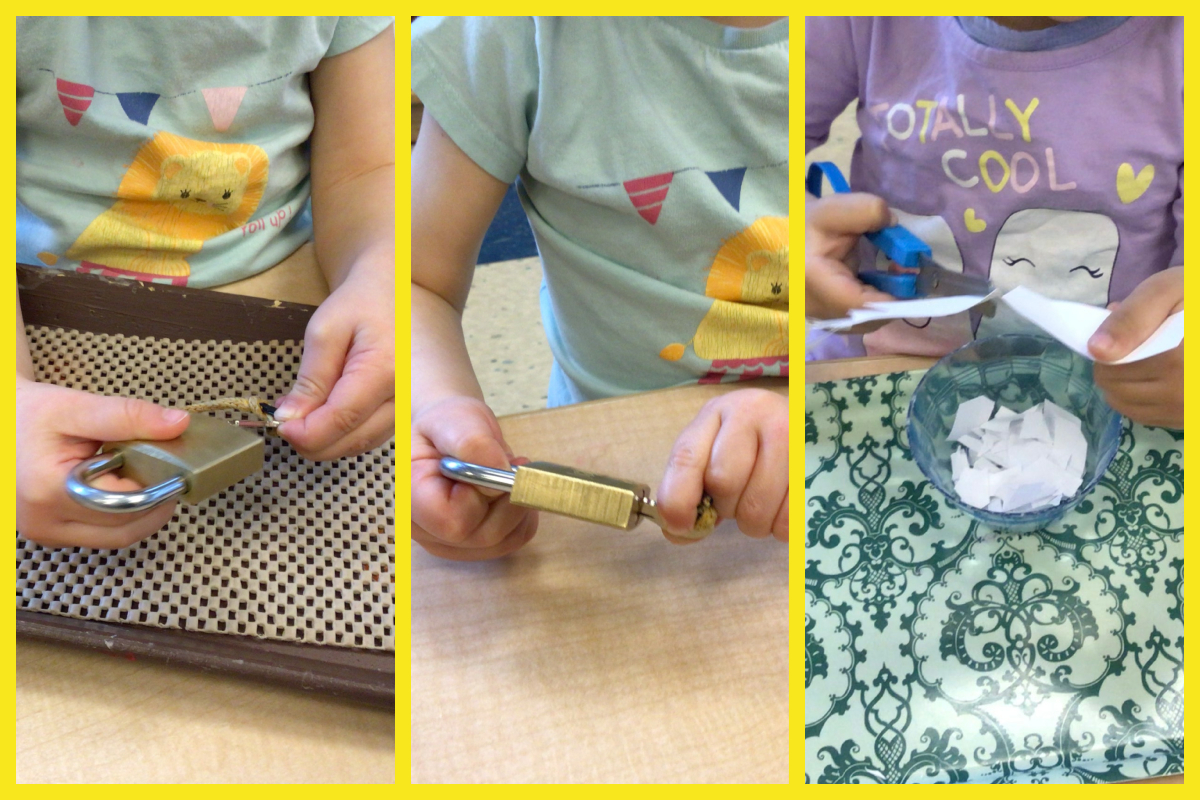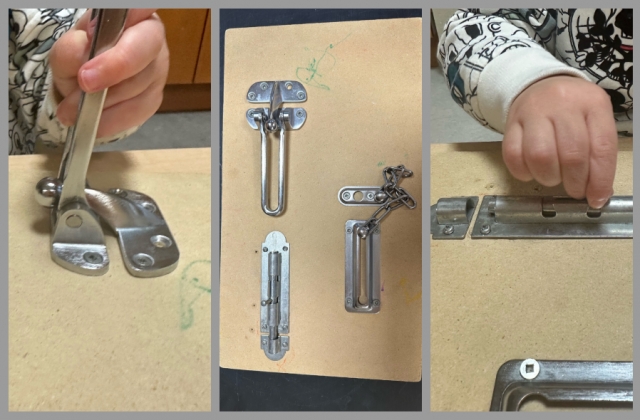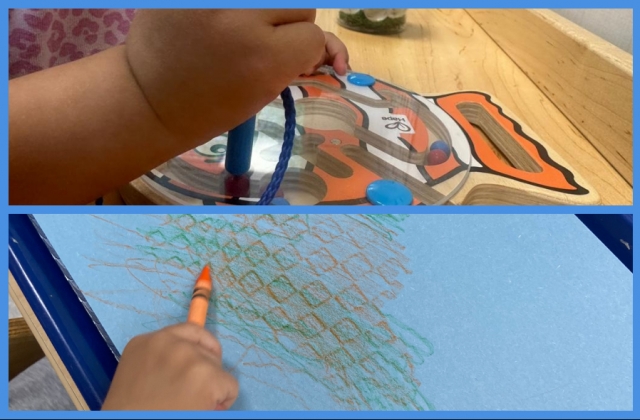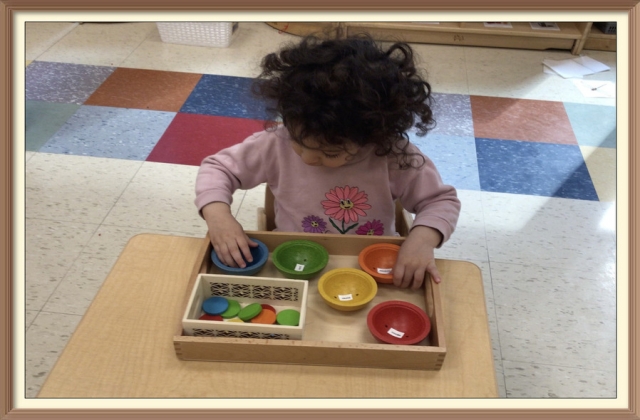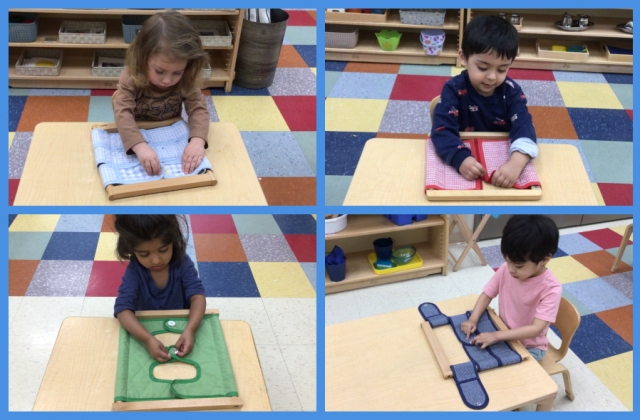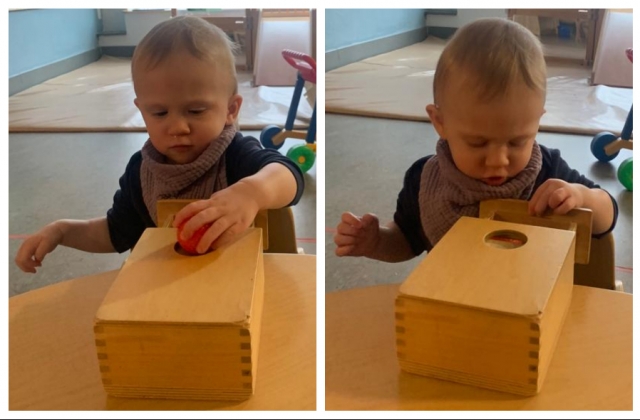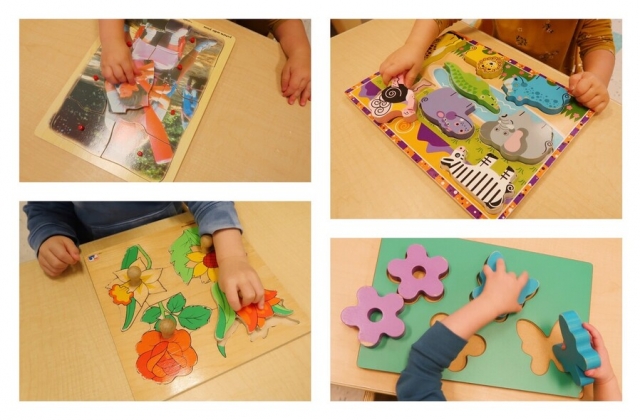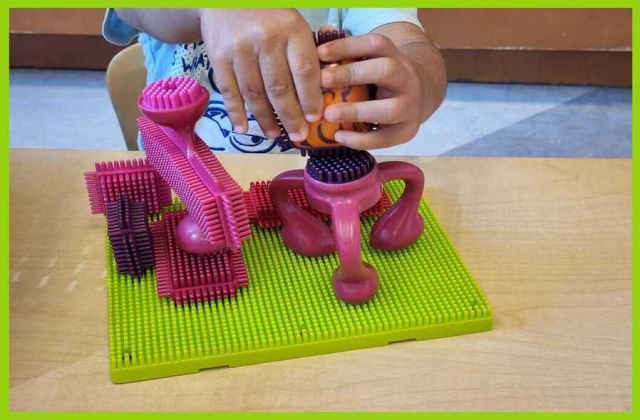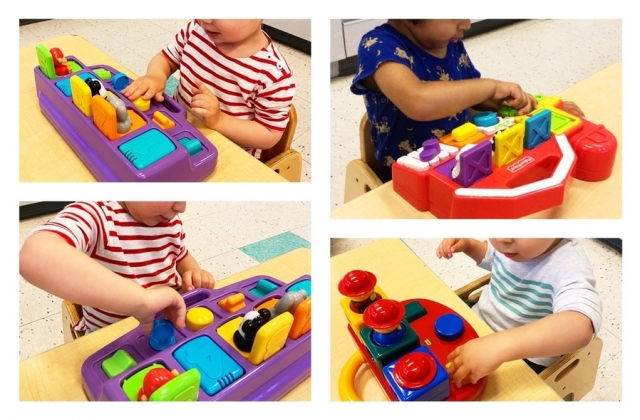Refinement of Movement
The children are seen here using some of the Refinement of Movement activities that are provided in the Under 3 classroom. The lock and key activity promotes eye-hand coordination, twisting movements, and a pincer grasp. The cutting activity allows the children to strengthen their hand muscles and grip strength. (Please click for more information and full photos.)
View
